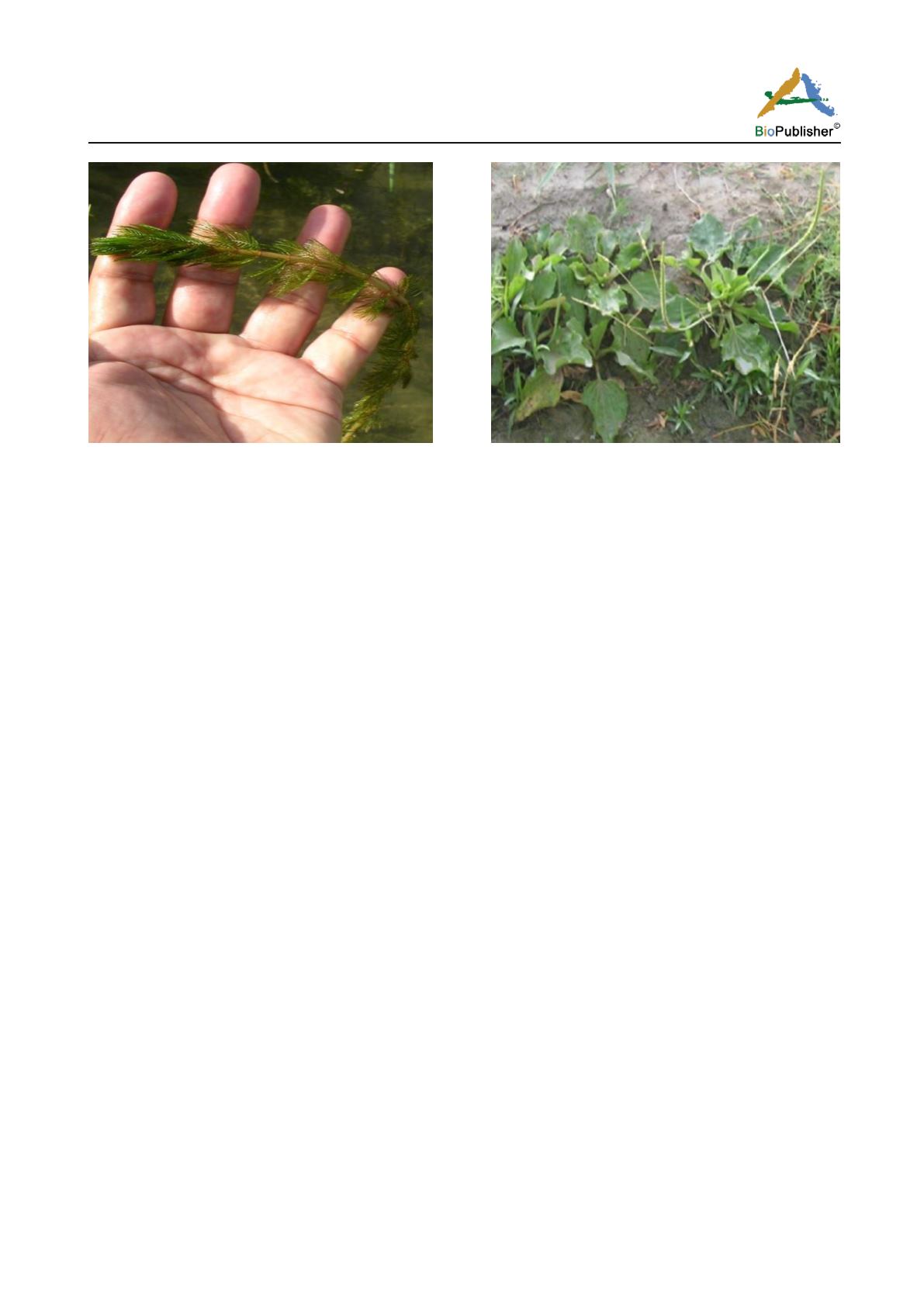
International Journal of Horticulture, 2017, Vol. 7, No. 25, 229-238
236
Figure 5
Myriophyllum spicatum
Figure 6
Plantago major
Portulaca oleracea
L. (Portulacaeae) A cosmopolitan weed in cultivated fields and waste moist places. Probably
native of South-West parts of United States and now widely distributed in warm temperate, tropical and
subtropical regions throughout the world (Ghafoor, 1973). This species grows as a weed in cultivated grounds
and waste damp marshy places. The species is of ethnobotanical importance (Marwat et al., 2011c).
P. oleracea
also occurs in QillaSaifullah Tehsil.
Potamogeton pectinatus
(Potamogetonaceae) Aquatic perennial, profusely branched, filiform, rhizomatous with
tuberous winter-buds, leaves submerged (Cook et al., 1974). It is also reported from Pakistan (Aziz and Jaferi,
1975) and QillaSaifullah Tehsil (Figure 7).
R
anunculus
muricatus
L. and R. scleratus L. commonly grows in marshy places in Pakistan (Riedle and Nasir,
1991). In QillaSaifullah Tehsil these two species also occur.
Rumex dentatus
L., grows in disturbed habitat, frequently in damp areas, such aslakeshores and the boundaries of
cultivated grounds. It is also found in QillaSaifullah Tehsil.
Salix acmophylla
(Salicaceae) is commonly cultivated along the margins of the ponds and irrigation channels in
QillaSaifullah Tehsil.
Suaeda fruticosa
(Chenopodiaceae) is halophytic species, growing on wet, moistor dry saline, alkaline and
gypsiferous soils in semi deserts, deserts and along sea-shores. In Pakistan, S
. fruticosa
is the most common and
ecologically most adaptable species of the genus (Freitag et al., 2001) and is also found in QillaSaifullah Tehsil.
Schoenoplectus
(Cyperaceae): There are c. 60 species, included in genus
Schoenoplectus,
which are widespread
in the world. 11 species are found in Pakistan (Kukkonen, 2001) and one species,
S. litoralis
(Schrad.) Palla
occurs in QillaSaifullah Tehsil (Figure 8).This species is partially submerged aquatic herb found in marshy
grounds (Marwat et al., 2008), alluvial meadows, by rivers and lakes, rice fields (Kukkonen, 2001).
Sonchus maritimus
L. is common on irrigation drainage channels, roadside (Qureshi et al., 2002).It also occurs in
QillaSaifullah Tehsil (Figure 9).
Symphyotrichum squamatum
(Michaux) G.L. Nesom is found in disturbed areas, roadsides, grassy fields,
irrigation ditches, rice field margins; near sea level to 2000 m.
an
2011). It is also found in our
research area (QillaSaifullah Tehsil).
Typha:
The genus
Typha
of family Typhaceae, has about 10-11 species. It also occurs in different marshland
environment (Omer and Hashmi, 1987; Thomas, 2008). In Pakistan, 5 species have been reported (Omer and


